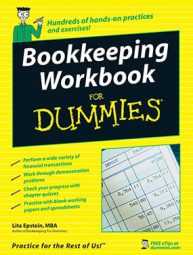After recording purchase transactions for a business, the bookkeeper takes primary responsibility for making sure that the bills are paid for both the inventory and the supplies purchased. Usually, you'll post the bills to Accounts Payable when they arrive, file them in the month or day to be paid, and pay them when they are due.
There are five key functions for paying the bills:
Entering the bills into the accounting system
Preparing the checks for paying the bills
Signing the checks
Sending out the payment to the vendors
Reconciling the checking account
One person should not be responsible for all these tasks. In fact the person who enters the bills into the accounting system and prepares the checks should never be the one with the authority to sign the checks.
To be even more careful about cash control, it’s a good idea to have a third person review the checks against the bills due and actually send the signed checks out to the vendors. By separating these tasks, you minimize the risk that business funds will be misused.
A key function of Accounts Payable is to keep track of any discounts your company may be able to take. For example, sometimes a company will offer a 2 percent discount on a bill if paid within 10 days and expect payment in full between 10 days and 30 days. There could be a late penalty of 1.5 percent interest for payments received after 30 days. The Accounts Payable clerk should organize the bills to pay them in time to take advantage of the discount and save his company money.

